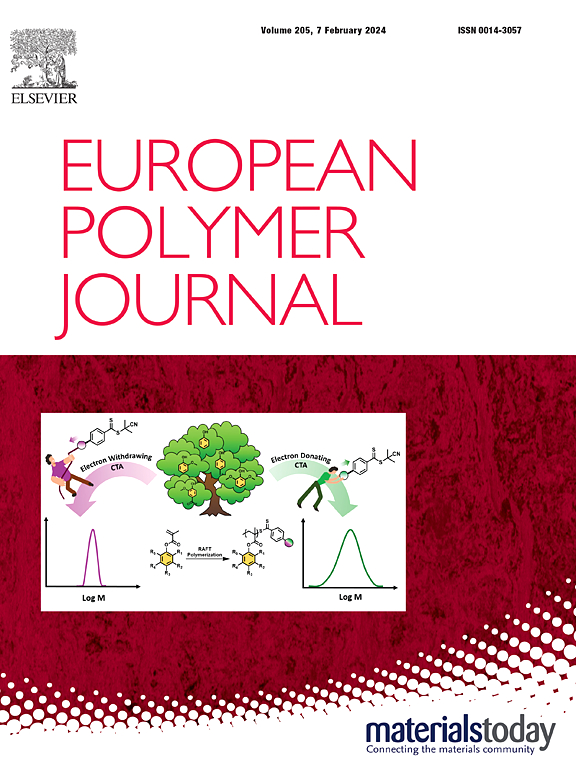Cation-π interaction mediated, anti-swelling, high-toughness and conductive hydrogel for regulation of PC12 neurite outgrowth
IF 5.8
2区 化学
Q1 POLYMER SCIENCE
引用次数: 0
Abstract
The complex pathological processes and the interrupted impulse transmission pose significant challenges to repair neural damage. Mutifunctional hydrogels integrating biochemical and biophysical cues are sought after for neural tissue engineering scaffolds. However, the susceptibility to swelling and embrittlement of hydrogel severely compromise their stability. In this work, the electrically conductive, antioxidant and swelling resistant polyvinyl alcohol (PVA) hydrogel was fabricated by integrating cation-π interactions and polydopamine (PDA) 2D nanosheets, which drives the self-assembly of hydrogel to form new crystalline domains as demonstrated by Fourier transform infrared (FT-IR) spectra, X-ray diffraction and Raman spectroscopy. The mechanical properties were thoroughly investigated. Specifically, the tensile strength was 3 MPa and elongation at break was up to 580 % after saturated swelling (<0.80). The multifunctional PVA hydrogels showed the ability to scavenge the free radical and promote the axonal outgrowth especially with electrical stimulation (ES). An electroconductive, antioxidant, swelling resistant multifunctional hydrogel was demonstrated as a potential tissue scaffold for spinal cord injuries (SCI) reparation.

求助全文
约1分钟内获得全文
求助全文
来源期刊

European Polymer Journal
化学-高分子科学
CiteScore
9.90
自引率
10.00%
发文量
691
审稿时长
23 days
期刊介绍:
European Polymer Journal is dedicated to publishing work on fundamental and applied polymer chemistry and macromolecular materials. The journal covers all aspects of polymer synthesis, including polymerization mechanisms and chemical functional transformations, with a focus on novel polymers and the relationships between molecular structure and polymer properties. In addition, we welcome submissions on bio-based or renewable polymers, stimuli-responsive systems and polymer bio-hybrids. European Polymer Journal also publishes research on the biomedical application of polymers, including drug delivery and regenerative medicine. The main scope is covered but not limited to the following core research areas:
Polymer synthesis and functionalization
• Novel synthetic routes for polymerization, functional modification, controlled/living polymerization and precision polymers.
Stimuli-responsive polymers
• Including shape memory and self-healing polymers.
Supramolecular polymers and self-assembly
• Molecular recognition and higher order polymer structures.
Renewable and sustainable polymers
• Bio-based, biodegradable and anti-microbial polymers and polymeric bio-nanocomposites.
Polymers at interfaces and surfaces
• Chemistry and engineering of surfaces with biological relevance, including patterning, antifouling polymers and polymers for membrane applications.
Biomedical applications and nanomedicine
• Polymers for regenerative medicine, drug delivery molecular release and gene therapy
The scope of European Polymer Journal no longer includes Polymer Physics.
 求助内容:
求助内容: 应助结果提醒方式:
应助结果提醒方式:


